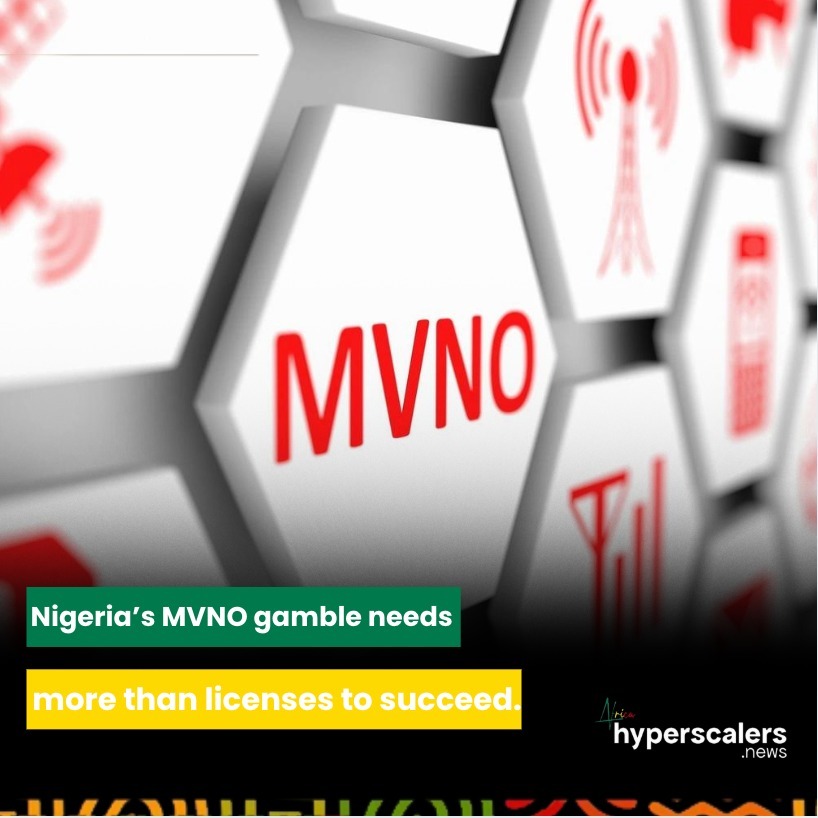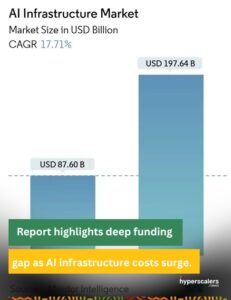In June 2023, Nigeria’s telecom regulator, the Nigerian Communications Commission (NCC), issued licenses to 25 Mobile Virtual Network Operators (MVNOs), followed by 18 additional approvals. It was a bold and long-overdue step. In a country of over 220 million people – where digital demand continues to outpace infrastructure and service quality – MVNOs offer a real opportunity to reset the dynamics of competition, pricing, and innovation in mobile connectivity. Yet nearly two years later, the promise remains largely unfulfilled. The licenses were issued, but the ecosystem MVNOs need – wholesale access, regulatory enforcement, and digital infrastructure – remains underdeveloped. Without urgent reform, this second attempt at telecom liberalization risks becoming another missed opportunity.
Understanding MVNOs – and why they matter
Unlike traditional Mobile Network Operators (MNOs), Mobile Virtual Network Operators (MVNOs) do not own radio spectrum, towers, or fiber infrastructure. Instead, they lease network capacity from existing MNOs and compete through differentiation – offering lower-cost packages, niche product offerings, or superior customer service.
The MVNO model is far from speculative. In the United Kingdom, MVNOs account for over 15% of mobile subscriptions, with brands like Lebara, Tesco Mobile, and Giffgaff thriving by targeting specific user segments. In South Africa, Cell C’s MVNO program enabled fintech-integrated services like FNB Connect to flourish. In France, clear wholesale access regulations have allowed dozens of MVNOs to emerge and compete sustainably. While structure and regulatory oversight have enabled MVNOs to thrive in other markets, Nigeria’s landscape is more complex – shaped by a legacy of underperforming digital infrastructure and underserved regions that make simply replicating those models unworkable.
Nigeria’s nascent MVNO market
On paper, Nigeria should be a dream market for MVNOs. Population and mobile penetration are high, but satisfaction and affordability lag. Demand exists for targeted bundles – for students, farmers, or diaspora users with purpose-built solutions. Yet, most of Nigeria’s licensed MVNOs have barely begun operations. Vitel Wireless, one of the more visible players, is running local ads but is yet to formally launch.
A major bottleneck, some say, is network capacity. MVNOs succeed when host networks have excess to sell. That’s not the case in Nigeria. MTN, Airtel, Glo, and 9mobile operate in a bandwidth-tight environment. “MVNOs rely on existing Mobile Network Operators (MNOs) like MTN, Airtel, Glo, and 9Mobile to host them,” says Dr. Ayobami Oladejo, a telecoms strategist and Managing Director at Digipractice. “But here’s the catch… the host MNO must have excess network capacity – both for voice and data. For example, if Airtel has at least 20% surplus capacity, it can wholesale that excess to MVNOs, helping monetize its infrastructure investment.” Another executive adds: “If the host network is weak, the MVNO inherits the problem. Customers don’t care who owns the towers – they blame the brand they’re using.”
Others argue that the capacity concern may be overstated. An executive with direct MVNO experience across Brazil, Mexico, and parts of Southeast Asia counters that even the most successful MVNOs tend to use less than 1% of an MNO’s total network capacity. “It’s a myth that MVNOs overwhelm host networks. What matters more is traffic management and service-level agreements. In most markets, with modern network planning, hosting a few MVNOs doesn’t materially affect core operations.”
The slow crawl of digital infrastructure
To understand MVNOs’ potential in Nigeria, it is expedient to examine mobile network maturity across peer markets. The United Kingdom enjoys near-universal mobile coverage, with 4G reaching over 99% of the population and 5G extending to roughly 20.9% in urban and 10.4% in rural areas. France has similarly high penetration, with 4G covering 99% and 5G reaching 93% of the population, thanks in part to a proactive regulatory regime. In South Africa, more than half the population had 5G access by the end of 2024, but device availability remains a hurdle, with many users still relying on 2G and 3G phones. In contrast Nigeria’s mobile connectivity is still dominated by older technologies. As of early 2025, 2G accounted for 41.6% of total connections, 3G for 8.75%, and 4G had grown to 47.2%. 5G remains nascent, comprising just 2.46% of active subscriptions.
This stark technology gap is a foundational limitation. Unlike mature markets where MVNOs can ride on well-developed 4G/5G infrastructure to offer differentiated services, Nigerian MVNOs are expected to scale inclusion and innovation atop networks that are themselves underbuilt and congested. In many parts of the country, quality of service from the host MNOs is already inconsistent, with persistent call drops, slow data speeds, and poor rural coverage. Without reliable infrastructure to ride on, MVNOs face an uphill battle.
This reality constrains their ability to niche down – because the very idea of targeting underserved groups with tailored digital services assumes the existence of a stable, high-capacity network. In Nigeria, that network doesn’t fully exist yet. Offering a fintech-enabled SIM or an education bundle becomes less viable if the underlying 3G/4G network in that area is patchy or overloaded. And with over 40% of connections still on 2G, many potential customers are using devices that cannot support modern MVNO use cases.
MVNOs cannot be positioned as inclusion enablers or disruptors until Nigeria addresses its most basic connectivity deficits. Otherwise, the risk is not just underperformance – it’s that MVNOs will inherit the same infrastructure shortfalls that MNOs have been battling for over a decade.
Regulatory and technical enablement
Nigeria’s NCC has taken commendable steps to modernize the country’s telecom landscape. From introducing the five-tier MVNO licensing framework to encourage innovation, competition, and expanded connectivity, to more recently approving the long-awaited 50% tariff adjustment – a critical move that enables telcos to reinvest in infrastructure and improve service quality – the Commission has demonstrated strong resolve in steering the industry in the right direction. However, more is still required. With the recent tariff adjustment, operators now have the financial flexibility to invest in infrastructure rollout, upgrade networks, and extend coverage to underserved rural areas – creating the kind of environment where MVNOs can finally take root and thrive.
With pricing pressure lifted, the imperative is to channel that margin recovery into sustained infrastructure upgrades. The immediate priority of the industry is expanding capacity. To onboard more customers and deliver consistent service quality, operators must invest in new cell sites, upgrade existing infrastructure, and expand backhaul capabilities. This means building out 4G and 5G coverage beyond dense urban hubs and into peri-urban and rural areas where demand is growing but infrastructure remains thin. However, rural deployment presents a unique challenge: high capital expenditure (CAPEX) and lower immediate returns. In these zones, the cost of site acquisition, power provisioning, and fiber connectivity can be significantly higher, while average revenue per user (ARPU) is lower. This is where government support becomes crucial. By offering fiscal incentives – such as tax holidays, right-of-way waivers, spectrum discounts, or universal service subsidies – the state can reduce the economic friction of rural rollout and encourage operators to push coverage to the last mile. In doing so, Nigeria doesn’t just enable MVNOs to scale – it expands the very market those operators hope to serve.
The MVNO framework currently requires licensees to negotiate wholesale agreements directly with host MNOs, but lacks standardized interconnection templates or enforceable timelines. This has resulted in inconsistent negotiations, prolonged delays, and limited onboarding of new operators. Unlike in markets such as Germany and Spain – where regulators actively manage access terms and pricing – the NCC has not yet published wholesale pricing benchmarks specific to MVNOs.
There’s also the issue of technical enablement. In mature markets, Mobile Virtual Network Enablers (MVNEs) handle backend functions such as billing, analytics, and customer management – allowing MVNOs to focus on service delivery rather than infrastructure. This layer is no longer a barrier in Nigeria. Robust cloud-based OSS/BSS platforms are now available, enabling MVNOs to launch quickly without the burden of building proprietary systems or grappling with legacy constraints. Interswitch’s Systegra has adopted the ConnectX platform by Amdocs, while Vas2Nets – backed by Lebara, has partnered with Swedish MVNE Telness. Both are already supporting MVNO rollouts in Nigeria with turnkey infrastructure that accelerates time to market.
The inclusion imperative
Building Nigeria’s digital infrastructure is not the work of one operator or agency – it takes a village. From mobile network operators like MTN, Airtel, Glo, and 9mobile, fiber and tower companies such as MainOne, WIOCC, Phase3, IHS Towers and American Tower Corporation (ATC); data centers such as Open Access Data Centres, Rack Centre and Africa Data Centres, every stakeholder plays a vital role. The Nigerian Communications Commission (NCC) sets the policy direction, but it is through the combined investment, innovation, and coordination of these ecosystem players that reliable, inclusive, and scalable digital connectivity will be delivered across the country.
We must never lose sight of what we are yet to overcome. According to GSMA, over 120 million Nigerians: more than half of the population, remain unconnected to mobile internet. The problem isn’t just about coverage; it’s also about affordability, digital literacy, and the absence of tailored services for the realities of rural and low-income users. Without meaningful digital access, millions are excluded from economic opportunities, education, healthcare, and participation in the digital economy. Bridging this divide isn’t just a policy goal – it’s a national imperative. Every effort to improve infrastructure, reduce costs, and create inclusive service models brings us closer to a digitally equal Nigeria.
MVNOs can help. They are uniquely suited to reach niche audiences – traders, students, rural farmers, and small businesses – with purpose-built solutions. If supported, they could act as catalysts for mobile adoption, particularly in communities the traditional telcos underserve. By introducing competitive pricing and niche offerings, MVNOs have the potential to connect an additional 20–30 million Nigerians within five years. This expansion would not only enhance connectivity but also stimulate economic growth. By onboarding more market players, MVNOS can invite more capital and innovation into last-mile connectivity. And as more Nigerians come online, data demand rises – driving growth in local cloud services, interconnection, and data center infrastructure. In this context, MVNOs aren’t just resellers. They are multipliers – a way to scale inclusion and deepen the digital economy without relying on state-led rollouts.
Same Issues, Different Days
But this collaboration and commitment can only be engineered by significant leadership. Olusola Teniola, former President of the Association of Telecommunications Companies of Nigeria (ATCON) and Director, Strategic Business Initiatives at ipNX, aligns around the need for political will to address the infrastructure deficit. “The infrastructure deficit and lack of political will to support a robust and resilient enabling environment in Nigeria is very much evident,” he says. “There are elements within government trying to address it, but the status quo persists in how the telco industry – and the broader ICT ecosystem – is viewed by policymakers. These issues have existed since NITEL, through the CDMA era, the UASL regime, ISP spectrum access, and now MVNOs.”
Teniola argues that true digital inclusion will require far more than new licensing models: “Full convergence; triple play and beyond, demands a unified regulatory approach that transcends current frameworks. Addressing the digital divide and ensuring meaningful access will take more than an MVNO toolkit.”
Hard Decisions Ahead
If Nigeria is serious about turning its MVNO policy into a functioning market, more needs to be done. With the recent tariff increase granted by the NCC, a buoyed industry has ordered $1 billion worth of equipment, according to the NCC EVC. With some stability, the NCC can actively broker relationships between MVNOs and MNOs, foster fair network access, and publish a reference wholesale pricing framework. Without such intervention, fragmentation and inertia will prevail. Enterprise buyers – banks, fintechs, manufacturing, state agencies – must also play a catalytic role by integrating MVNOs into digital inclusion strategies that prioritize reach over rhetoric.
To move from policy to impact, wholesale pricing must be transparent and enforceable, eliminating the asymmetry that gives incumbents much leverage. Partnerships between MVNOs and host networks must be incentivized, and MVNOs must be positioned not as substitutes for legacy networks, but as strategic complements – built to innovate into the white spaces MNOs are unable to serve.
Frameworks… and Incentives
Enabling MVNOs is not regulatory housekeeping – it’s strategic self-preservation. With 43 licenses issued, the Commission faces a defining test: can it turn policy into performance? Failure could shelve meaningful telecom reform for another decade. A functional MVNO ecosystem would drive mobile adoption, widen the Commission’s influence in an evolving tech economy, attract infrastructure co-investment, and amplify demand for cloud, interconnection, and local data centers – multiplying growth across the digital economy.
For MNOs, MVNOs offer new wholesale revenue streams and indirect access to niche markets they might otherwise ignore. But that market cannot exist in isolation. The MNOs – who’ve borne the cost of building towers, laying fiber, and absorbing regulatory friction – must see MVNOs as allies, not adversaries. That requires more than rules; it demands incentives: tax relief for shared infrastructure, spectrum perks for wholesale access, or universal service funds tied to MVNO partnerships. Innovation won’t flourish if the rails it rides are resentful. For the NCC, this is more than a licensing milestone – it’s an opportunity to rewire the industry for inclusion, innovation, and scale.
Your Next Move, Nigeria
Licensing MVNOs was a bold first move by the NCC – made smarter by its tiered structure, which opened the door to a spectrum of operators, from resellers to full-core virtual networks. It was a flexible foundation meant to spur innovation without sacrificing oversight. But structure alone doesn’t scale markets. It needs fuel: enforceable wholesale terms, aligned incentives, and regulatory follow-through.
Dr. Aminu Maida has signaled a shift toward agile, innovation-led oversight – prioritizing quality of service, digital inclusion, and forward-looking frameworks around 5G, AI, and spectrum. Alongside the Minister of Communications, Innovation and Digital Economy, Dr. Bosun Tijani, Maida has already convened key stakeholders around digital inclusion. Now, he can push the next phase: standardized wholesale agreements, meaningful incentives for MNOs, and enforceable access rules that transform policy into performance. His tenure offers a rare opportunity – not just to enforce compliance, but to create a truly competitive telecom marketplace.
Without structural reform and commercial safeguards, this MVNO initiative will stall. Given a fair operating environment, MVNOs can become one of the most effective levers for expanding access and deepening competition in this decade. The first step has been taken. The next ones will demand political resolve, regulatory precision, and industry-wide cooperation.
Nigeria: what’s your next move?
We are hosting the MVNO Nigeria 2025
The event, MVNO Nigeria 2025 session themed Unlocking Growth, Competition & Connectivity. This session will host top executives from MVNOs, mobile network operators, regulators, and tech providers, alongside global experts, to tackle the complexities of Nigeria’s fast-evolving telecom landscape. Register here.





